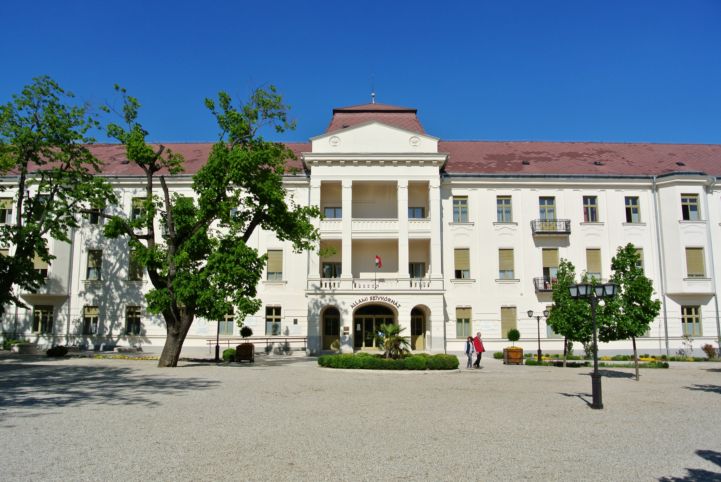State Hospital for Cardiology, Balatonfüred
The history of Balatonfüred's hospital begins in the 18th century when the presence of the healing, acidulous, C02-rich water was first noted. At this time, the area of the later hospital and the spring was owned by Miksa Tenkovits who built a bathing house with 10 heated CO2-rich baths. After the death of Tenkovits, his wife sold the bathing house to the physician József Schuster who operated the bathing services between 1741 and 1748.

A year later the bath was leased by abbot Ágoston Lécs, who also became the owner of the territory in 1755. With his expansion, the bathing house now had 23 healing baths. As the bath became more and more popular, the first larger building, the single storey Old Bathing House was constructed in 1765. This building stood on the spot of the Eastern wing of the present building. In 1826 and 1834, fires damaged the bathing equipment. During the reparation works in 1835-36, the two storey, Classicist style New Bathing House was built by János Packh, which was also connected to the older building by a roofed corridor. In the 1860-70's, there were further expansions and a new, eclectic style wing, the Erzsébet Court looking over the Balaton was built based on the plans of Bernát Cametter. Later, the complex was named Erzsébet Sanatorium after the new building.

The bath was renovated in 1912-13, the facade was redecorated in Art Nouveau style and it was expanded with the Tibor Wing. During World War I, the already famous sanatorium housed a military hospital. In 1926, the famous Hindu poet, Rabindranath Tagore was a patient here, an event which is commemorated by the naming of the Tagore Promenade in the city. The bath was nationalised in 1949 and since that it operates under the name of State Hospital for Cardiology. The building and its equipment was renovated once again between 1965 and 1969 and it was turned into a cardiology rehabilitation center for people with cardiovascular diseases. In the 1970's, the building was expanded with an additional wing.
Today tens of thousand of people are treated yearly in the hospital. The building and its surroundings are part of the protected area, and in 1971 the acidulous spring water was officially registered for its healing properties.
